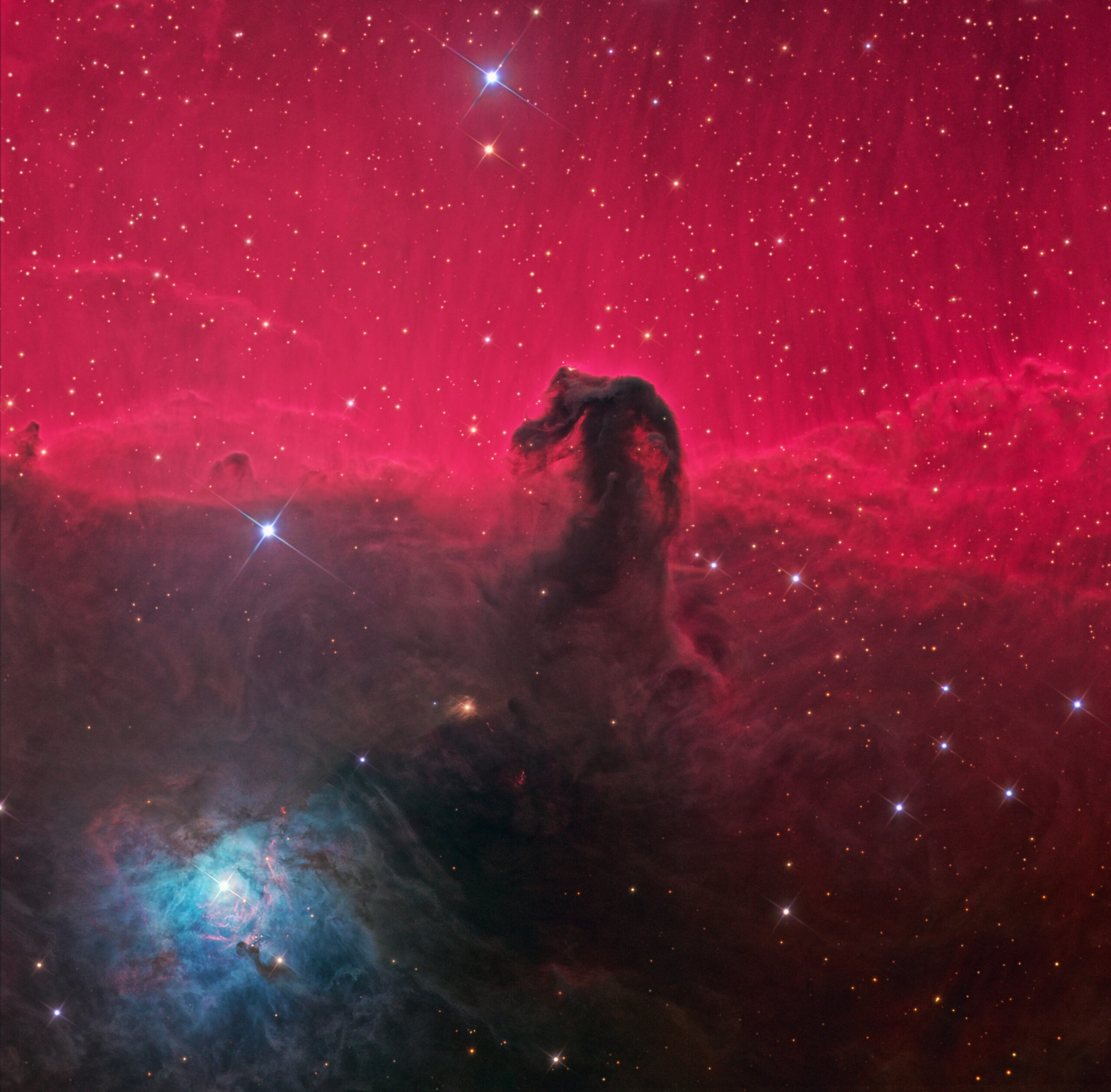It’s February 2020, one of our last weeks in the classroom before everything turns inside out, but we don’t know this yet. I am a writer in residence at a public elementary school that serves San Francisco’s Tenderloin neighborhood. A San Francisco Arts Commission grant funds my residency, part of an initiative to place poets and fiction writers in public schools, community centers, and jails to lead creative writing workshops. I’m about to teach––and learn––my most difficult lesson as an educator. In a way, it will also be my most successful lesson. Mostly by accident. But I don’t know this yet either. I also don’t know that my shyest and most enigmatic student will be the one schooling me.
I work with third, fourth, and fifth graders. Today I lead my youngest and most boisterous group from their regular third-grade classroom to my own sunny room at the end of the hall. On clear days, like today, through the windows, we can see the tops of Nob Hill’s hotels notching the horizon in blocky pastels. Behind the scenes of their Art Deco opulence, a few of my students’ moms clean rooms while their occupants visit Alcatraz or Fisherman’s Wharf. When it’s foggy, our view shrinks to the school’s playground and the alley it borders, its sidewalk lined with cardboard homes that belong to the people who live there.
We settle in, and I begin the hour with some show-don’t-tell skill building, my go-to activity for “weaning” my young writers off static be and have verbs and onto a solid diet of action verbs. I keep a stash of photos with “kinetic potential” to project on-screen and ask my students to describe what’s happening, just happened, or might be about to happen in whichever image grabs their eyes.
“Instead of listing the things you see,” I remind them, “describe what they do.”
Today’s image sparks are photographs of nebulae––clouds of interstellar gas and dust, light-years away––taken by the Hubble Space Telescope. I chose these cosmic light shows, thinking their lack of clear subjects might nudge learners away from be-verb lists (e.g., There is a dog. . . . There are trees) and make space to explore actions alone.
“Instead of trying to name what you see,” my mantra goes, “write about how the shapes of light and color move.”
“Instead of trying to name what you see,” my mantra goes, “write about how the shapes of light and color move.”
But the kids want to know if these psychedelic swirls and ripples are “real,” where they come from, how they work. Suddenly, we are on a deep dive into the nature of space and time, my warm-up exercise forgotten by the kids, but a lesson for me I never stop learning: meet students where they are.
So I shift gears, find a kids’ space website, and project it on-screen. It turns out there are a few different kinds of nebulae. The kids and I learn about them together. Stellar nurseries are clouds of dust and gas that give birth to stars. The heavy dust content of dark nebulae blocks the light of distant space objects behind them. Planetary nebulae were misnamed by ancient astronomers who thought these shells of gas were planets.
The kids start claiming topics. “Stellar nurseries sound cute!” . . . “I want planetary nebulae!”
My poetry workshop has morphed into an astronomy class, but I go with it. If circumstances make unplanned activities unavoidable, for me, they usually crash and burn. But the detour this time is student-steered, and for now, we are soaring! We brainstorm what this project might look like, and by the end of the hour, each student has a topic.
Everybody but one.
Eric (I’ve used a pseudonym here) is a quiet third grader who punctuates his self-portraits with teardrop-shaped bags under his eyes. Many teachers might call him a “reluctant writer.” He rarely speaks or produces more than a word or two each writing session. I ask him to walk with me as I shepherd the class to recess.
“So,” I say, “have you thought about which nebulae group you want to join?”
He thinks for a beat, then whispers, “Dark nebulae.”
“Okay, great. Why dark nebulae?”
“The Horsehead Nebula is that kind.”
“You like that one?”
“Yeah, but it doesn’t look like a horse.”
“What does it look like?” “A man,” he says. “A man with a lot of power.”
While the kids are outside, I reread the last piece Eric published. The Visit is a personal narrative, illustrated comic-style in a series of panels, about a visit he and his mom made to his dad in jail. He’d started an early draft of the piece as part of a “filter finding” lesson on sensory detail descriptions of setting, a variation on the nebulae warm-up. My mantra then was more or less the same: “Don’t list what you see, hear, taste, smell, touch; describe what things do.”
And Eric did. Three or four words per day. As soon as he had a complete sentence down, I asked if he’d like to workshop it with the class. He agreed. I called the kids to the rug and projected his draft on-screen.
I read his sentence aloud. The light on the ceiling hurts your eyes sometimes. “Nice work!” I said. “The light here is doing something. What does it do? What’s the verb here?”
Dead air, then a tentative “hurts?” from a classmate.
“Is that even a verb?” another student wondered.
“Yes,” I said. “Anything you can do is a verb. Hurt is a thing you can do.”
Everyone seemed to accept this even though this group enjoyed arguing with me over undisputed facts, demanding I google to corroborate claims like humans are mammals or anyone alive for the moon landing could not also have participated in the gold rush.
“Sometimes, when you’re describing a new place,” I said, “it helps readers picture it if you compare the colors or shapes there to something more familiar. Where else do you see light like the light in Eric’s description?”
When a classmate suggested the sun, I asked Eric what he thought.
“Okay,” he said.
I’d been to a jail visiting room. I don’t recall the light there resembling sunshine, but I didn’t say anything. I knew it was up to Eric to decide how much backstory he wanted to reveal to his classmates, if any. Still, I kept pushing. “What kind of sun? What is the sun doing? Could you try out a verb here?”
A few kids called out, “Shine.”
“Shined where?” I pressed on.
Blank stares.
“––into, onto, through what?” Sometimes, offering a few prepositions gets the gears turning.
“Through the clouds?” someone suggested.
After a bit more discussion and input from classmates, Eric had a revision: The light on the ceiling hurts your eyes sometimes. Another place you see that color is in the sky when the sun shines through the clouds.
I asked Eric what he thought.
“Not shines.”
“Oh, are you thinking a different verb would work better?”
“Yeah,” he said. “Stabs.”
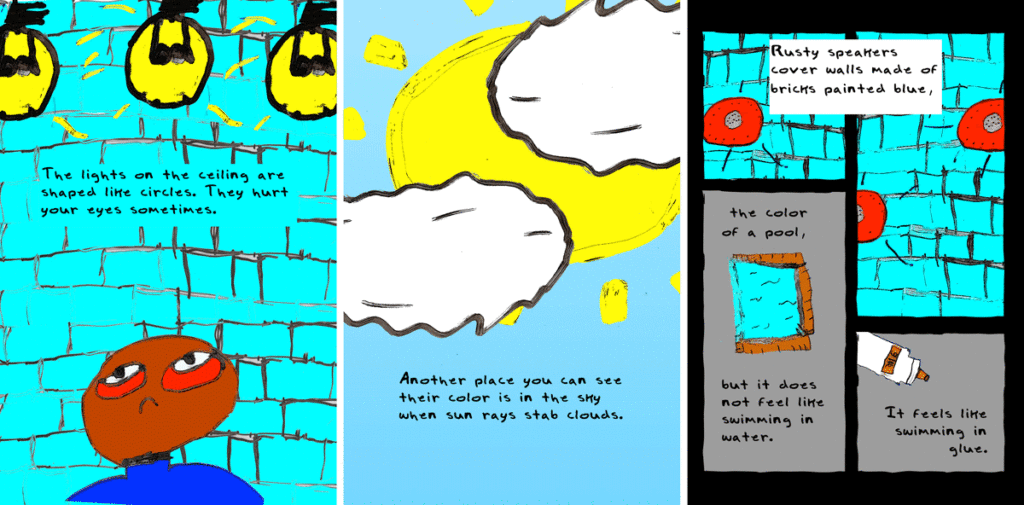
It’s a week into our cosmic adventure. As students work in groups researching various elements of the nebula’s story, questions surface: What is a light-year? How long would it take to travel that far?
Since my job is to teach creative writing, I call our new project creative nonfiction. I think of the lyric essays anthologized in The Best American Science and Nature Writing each year.
I think of the butterfly metaphor in Ocean Vuong’s On Earth We’re Briefly Gorgeous:
Migration can be triggered by the angle of sunlight, indicating a change in season, temperature, plant life, and food supply. Female monarchs lay eggs along the route. Every history has more than one thread, each thread a story of division. The journey takes four thousand eight hundred and thirty miles, more than the length of this country. The monarchs that fly south will not make it back north. Each departure, then, is final. Only their children return; only the future revisits the past.
But we are writing about how the past visits the present.
Still, the rules of storytelling can apply. Characters, narrative, rhythm, place. Our work will be to milk fiction from facts, poetry from particles. But I’m fuzzy on how to orchestrate this maneuver.
I am at the helm of an alien craft.
As the hour winds down, I gather the kids for recess. The bell is about to ring, but they ask how long a trip to Earth’s closest nebula would take.
The next day, we do the math: 14 million years with today’s technology. A number so fantastical it seems like fiction. We’re moving in the right direction, but in a slow, floaty way. I’m still not quite sure where we’re going with this. It is Eric who shows me a way to course correct.
His Horsehead Nebula is on-screen beside the big-numbered equations. The man with a lot of power. “He’s walking on the clouds,” Eric says.
We recently finished reading Omar Mohamed and Victoria Jamieson’s graphic memoir When Stars Are Scattered. As part of a mentor text study of the work, we explored ways to personify objects by giving them human body parts, e.g., fingers of wind stroke my cheek.
When I check in on Eric later, I find another sentence: Stars become his eyes.
He’d taken his imagery a step further than we had in the mentor-author study. Instead of seeing an object and giving it human body parts, he saw a human in the billowing gas and dust and sketched the man’s facial features with bits of night sky.
When Eric shares his work, he sparks a chain reaction of otherworldly meditations. This craft is no longer unfamiliar. Characters emerge. An alien is narrating. We will call our project Our Nebulae Neighbors and publish it as a “cosmic comic.” Nebula-inspired poetry will fill the spaces between pages devoted to the story of these interstellar wonders.
Here are some excerpts of the science writing:
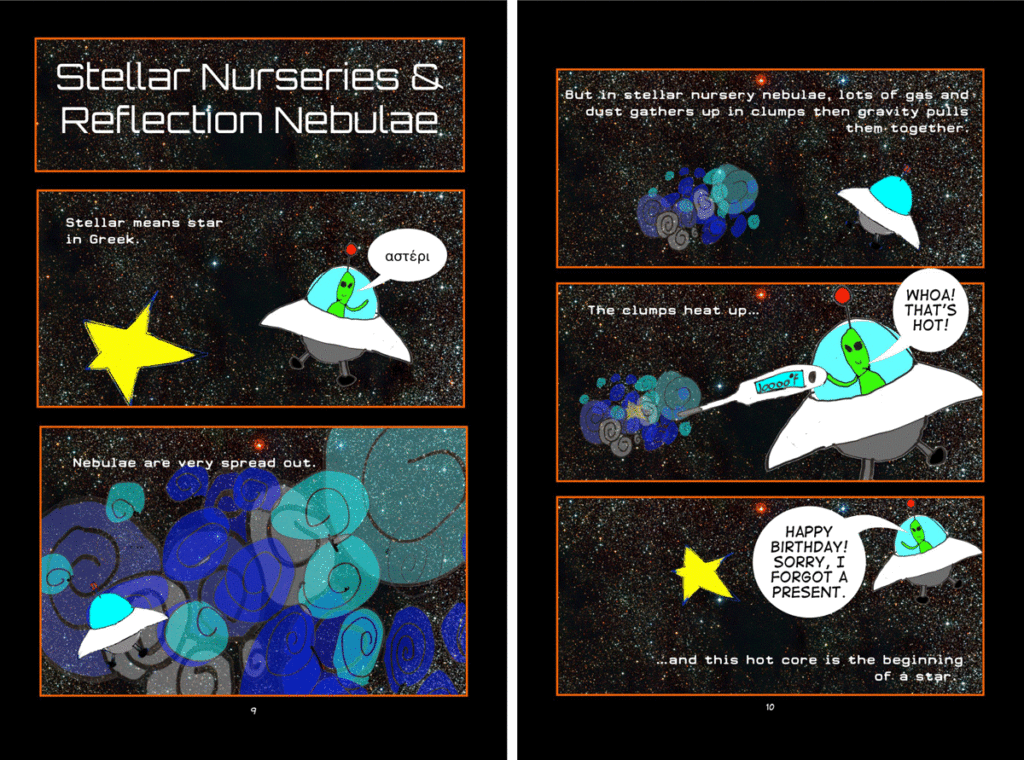
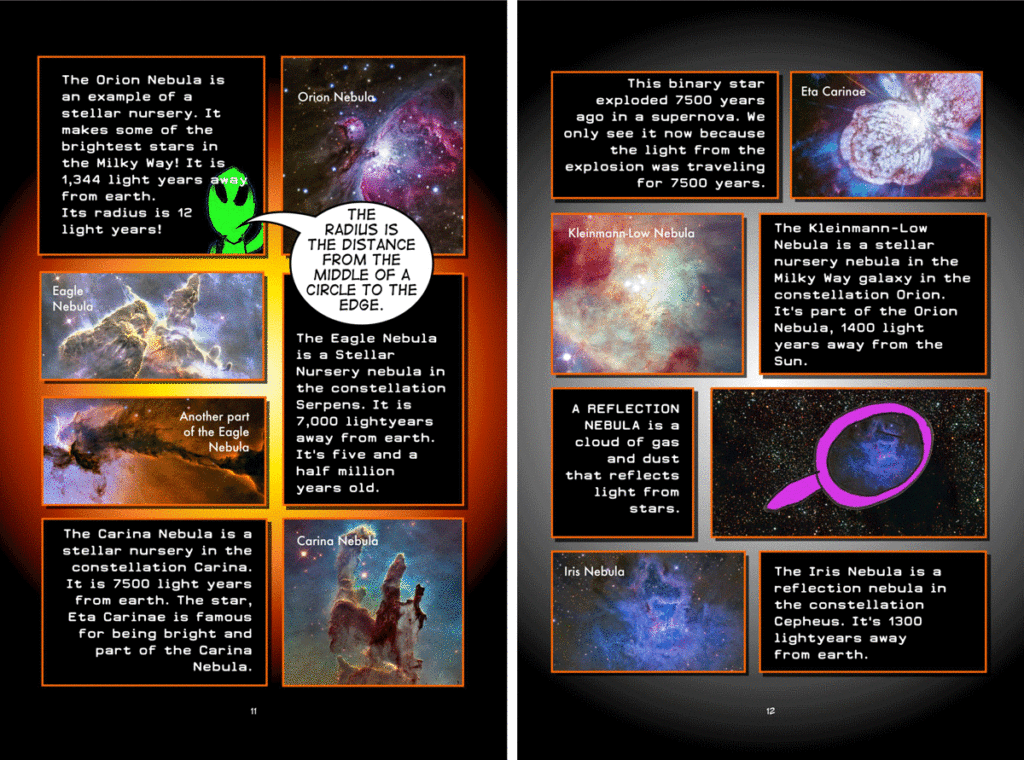
Here’s some of the poetry:
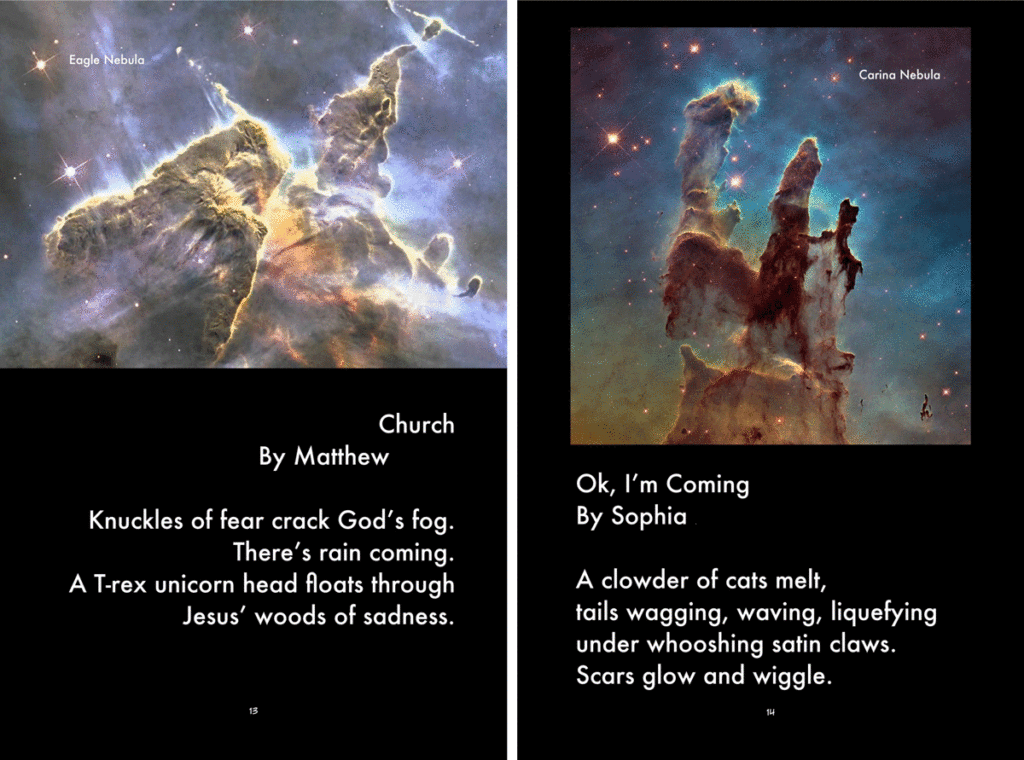
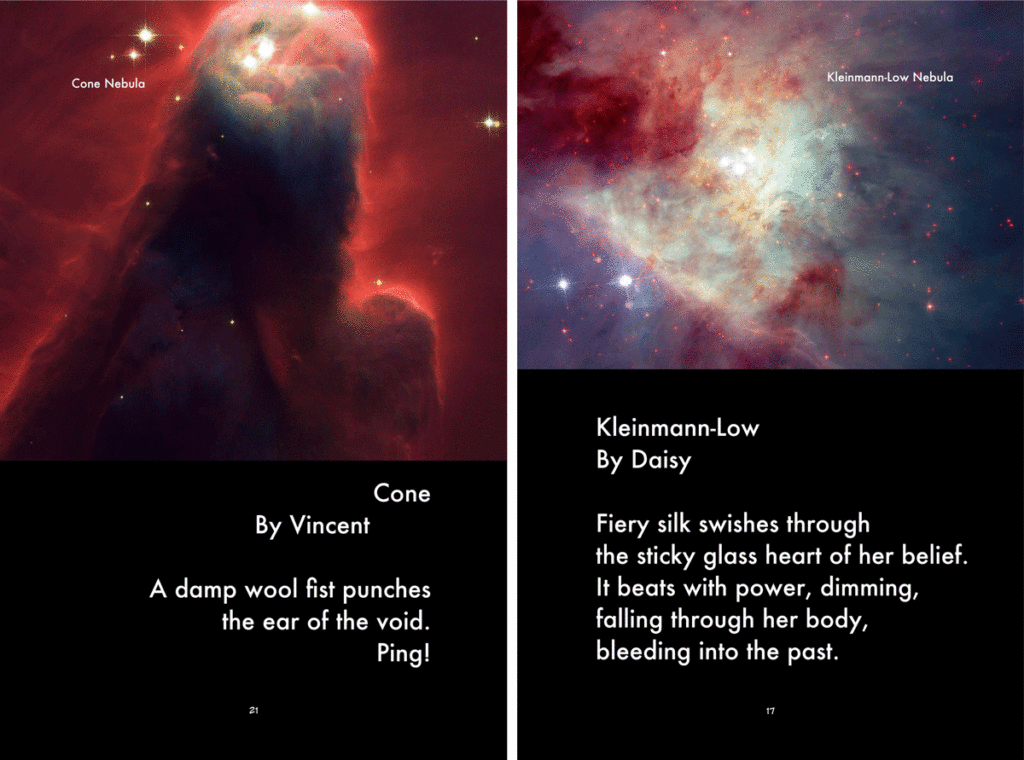
The abstract nouns that power the imagery in these pieces materialized in later drafts after another lesson from our mentor author study of When Stars Are Scattered, this one on approaches to rendering feelings and ideas in concrete, “seeable” ways.
It’s April 2020. Only about half of my students occupy a frame in my Zoom room. Eric logs in from the bathroom of the studio apartment he shares with an extended family. It’s the only space he can find to focus, mostly undisturbed. He sits on the floor, leaning against the bathtub, wet laundry hanging from the shower curtain rod above him.
He hasn’t said or written a word since Horsehead. Even if I try speaking with him directly––aloud or in the chat box, nothing but silence.
Still, he shows up religiously without any reminders from adults. I can tell because his mom sometimes forgets the bathroom now also serves as a classroom. Today she comes in and asks Eric what he’s doing. When he turns his Chromebook around and shows her the screen, she flashes the class a smile before backing out and pulling the door closed.
Most kids who attend my digital classes rarely speak, write, or show any signs of life at all, except for the thumps and chimes of their Roblox games when they forget to mute their mics. It’s impossible to get them to keep their cameras on. Eric is the only one who does.
I have a shared Google Doc open on-screen so I can see what they write, each student’s name beside a box for them to fill with prompt responses. Most are empty. Kids who used to write pages at a time now only manage a few words. Desperate for a way to crack the shells they’ve grown in lockdown, I try inspiring them with their past selves. I read Our Nebulae Neighbors, fill my shared screen with its colorful collages and the strongest writing the kids have done all year.
If poetry has a definable “job,” it’s to promote wonder, curiosity, new ways of seeing.
Horsehead is on-screen, the final pages:
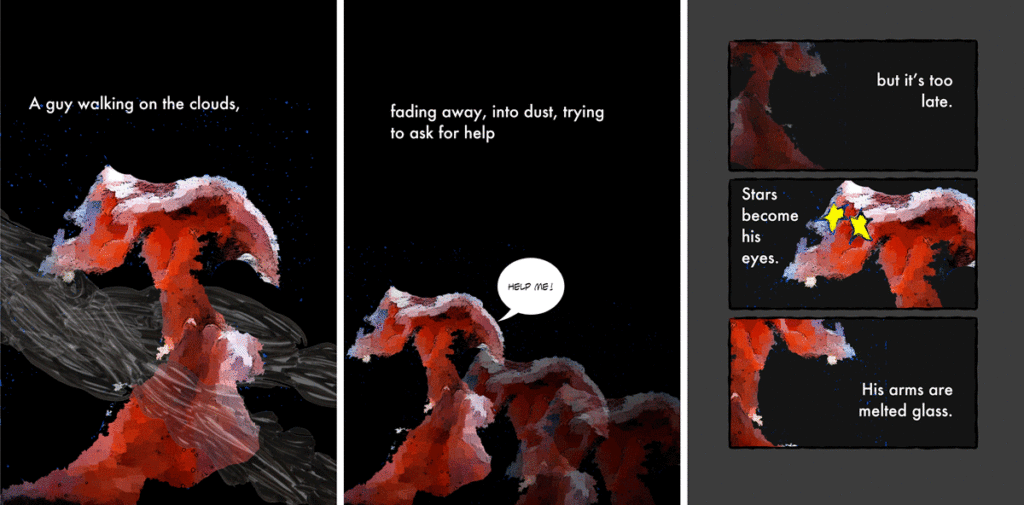
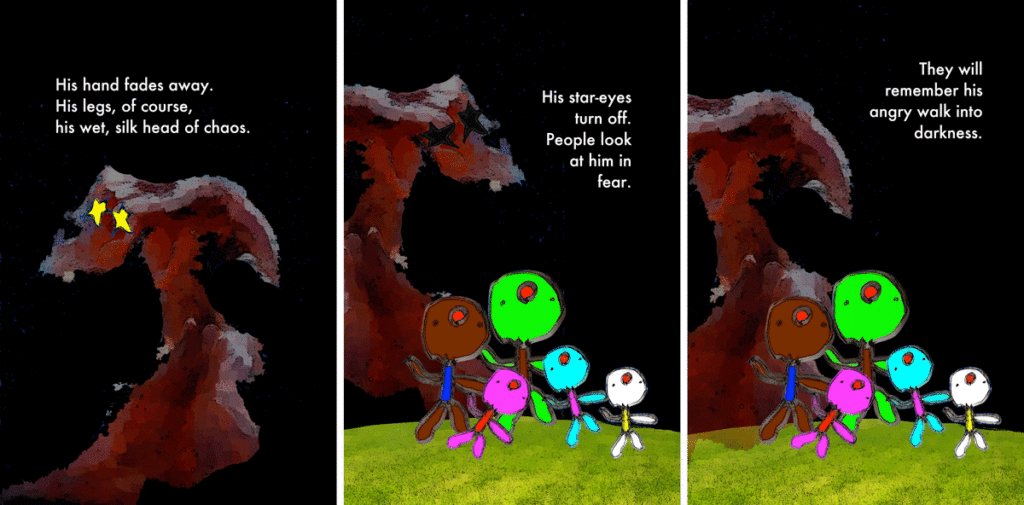
Beneath his ever-present halo of dripping t-shirts and socks, Eric listens to me read his writing back to him. He is still until words come flooding through his fingers, onto his keyboard, then our Zoom room’s shared Google doc: A nightmare crawling into your body.
Eric writes everything in second person. Many of the third graders have only a rickety grasp of point of view. I ask him who the “you” is this time. “Is it you––Eric, like you’re writing a message to yourself?”
No answer, but more words appear in his allotted box: The crooked scary man of your dreams.
“Is it the man with a lot of power?”
He doesn’t say anything, but I know there will be a sequel to Horsehead. The man with a lot of power is still with him.
Eric names his next project Black Hole.
Robyn Carter is a writer, curriculum designer, and educator who’s been teaching writing to tweens for twenty years, most recently as a San Francisco WritersCorps Teaching Artist in Residence at a public elementary school in the City’s Tenderloin Neighborhood. Her ed writing has appeared in KQED In the Classroom, and Teachers & Writers Magazine. Find her fiction in Conjunctions, Ninth Letter, Prime Number Magazine, and other journals.

